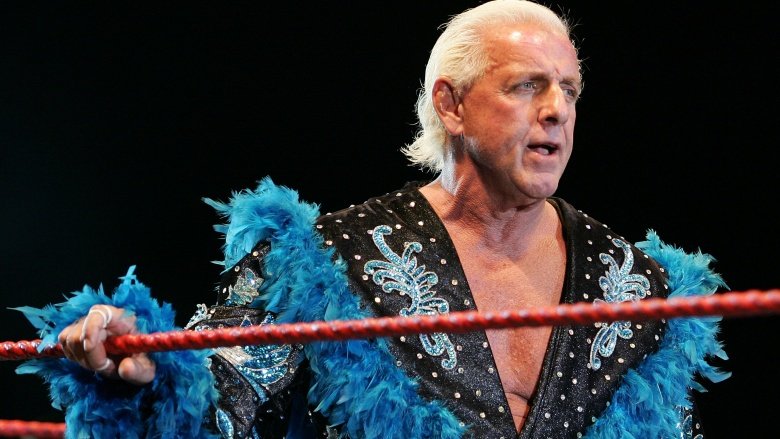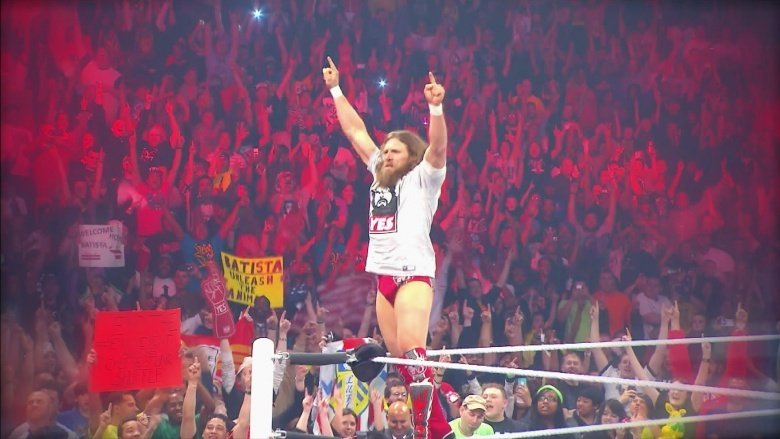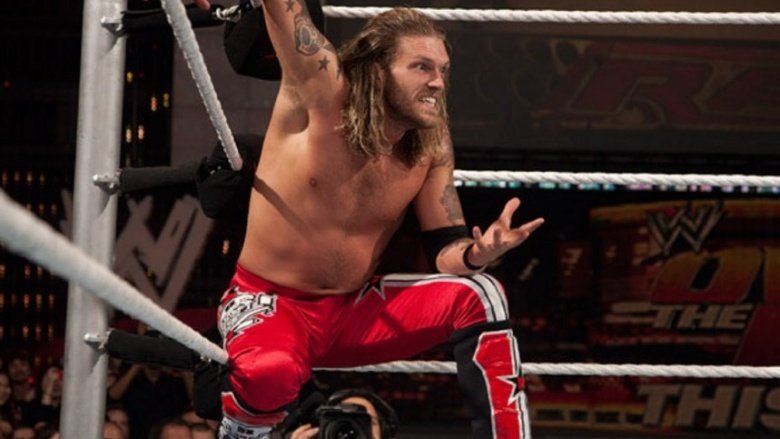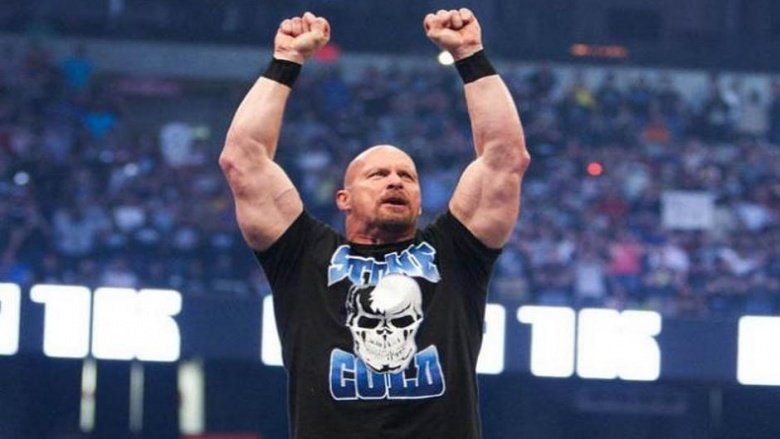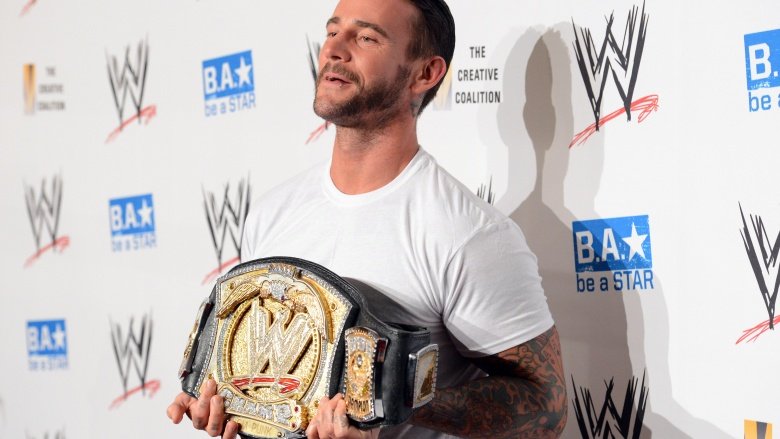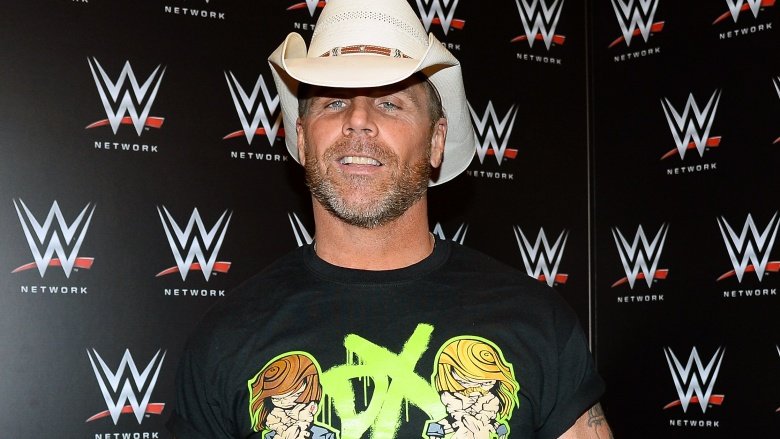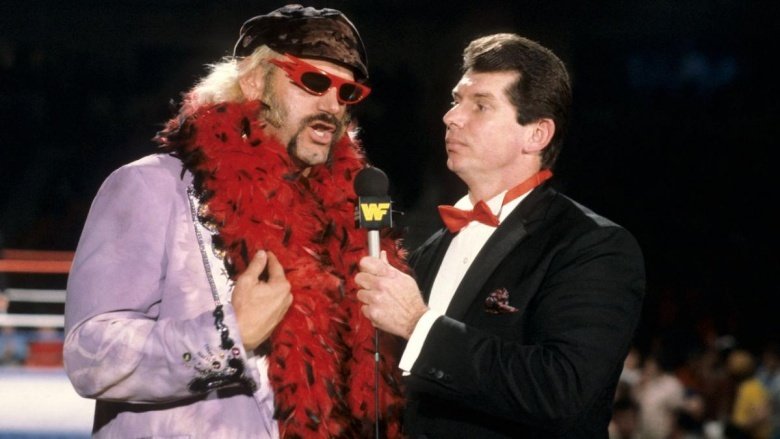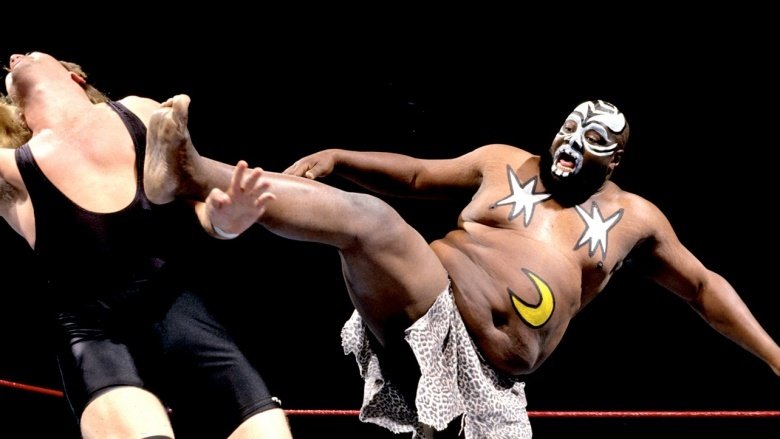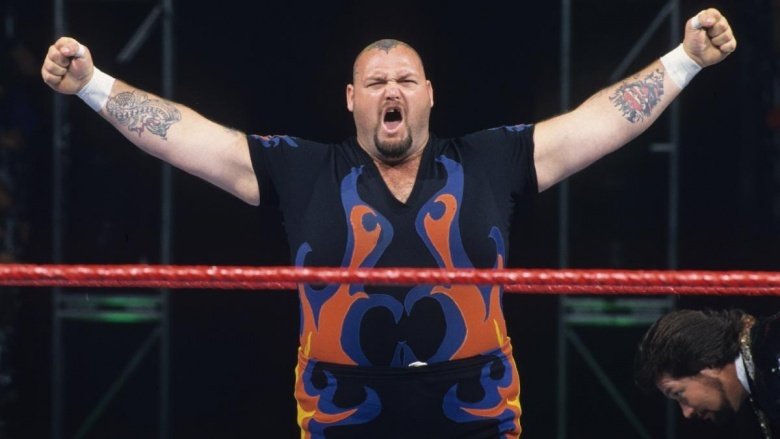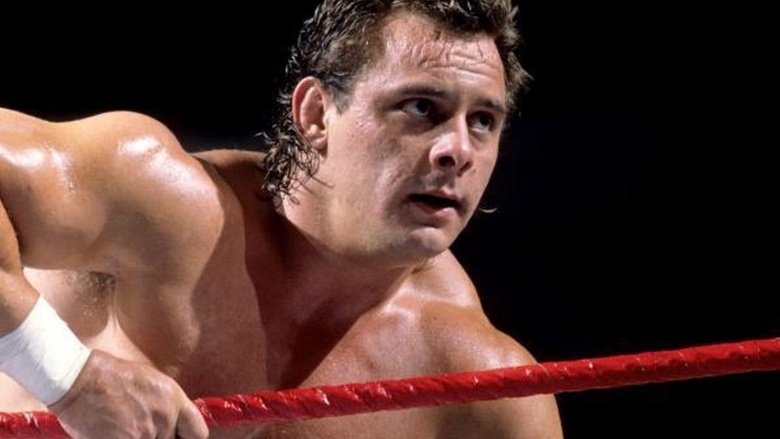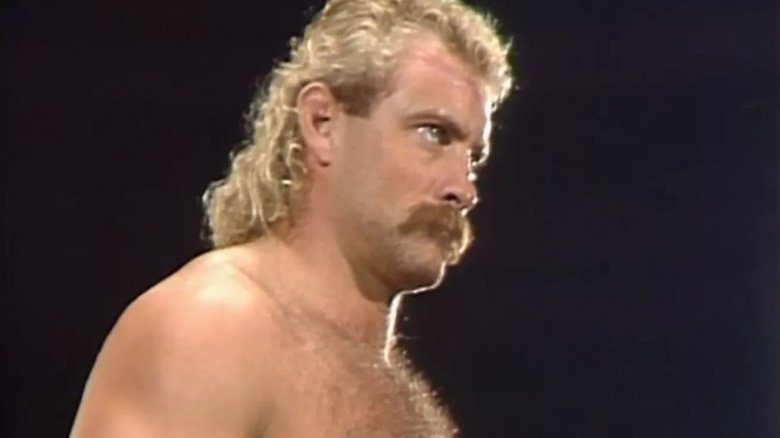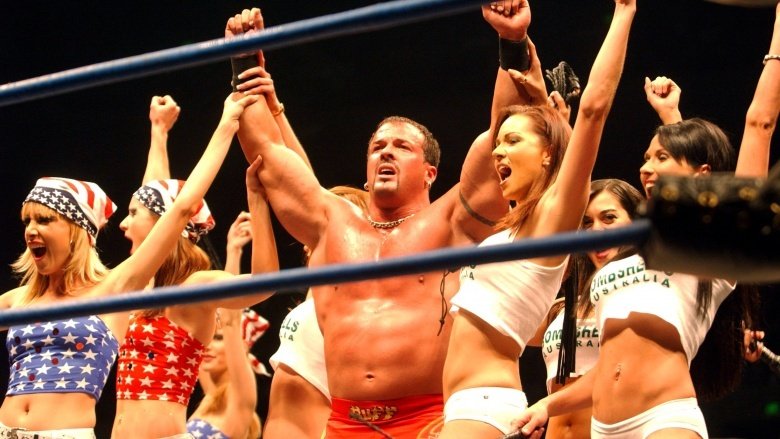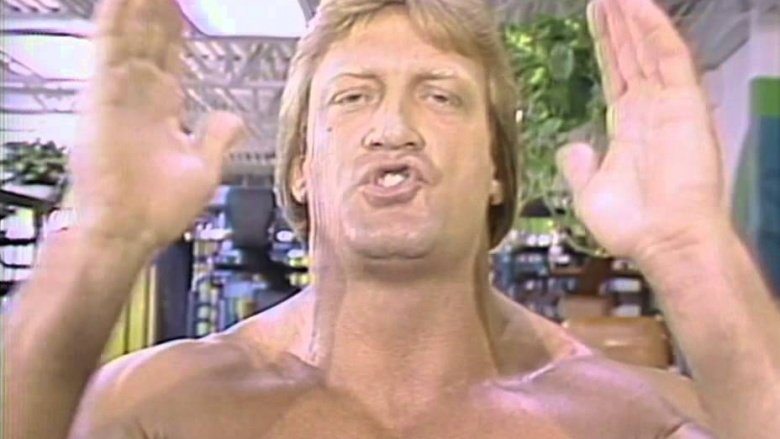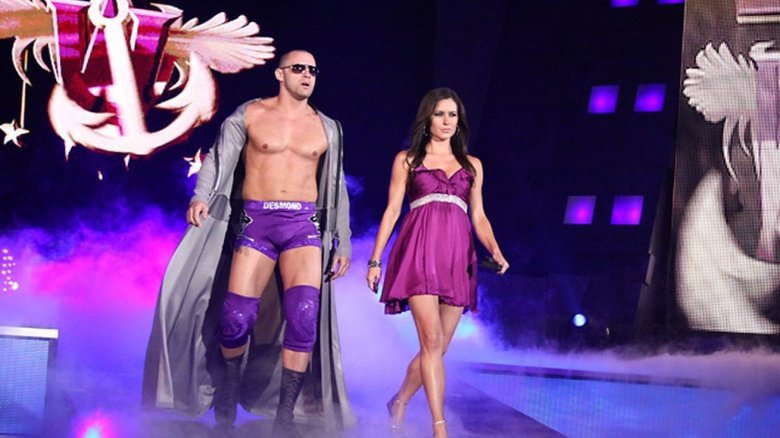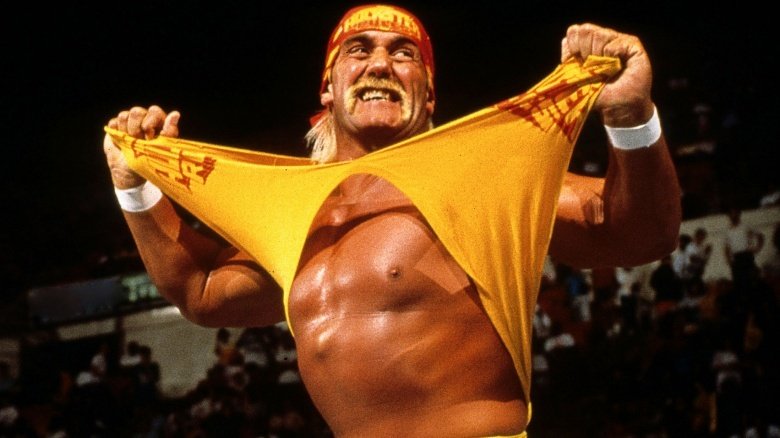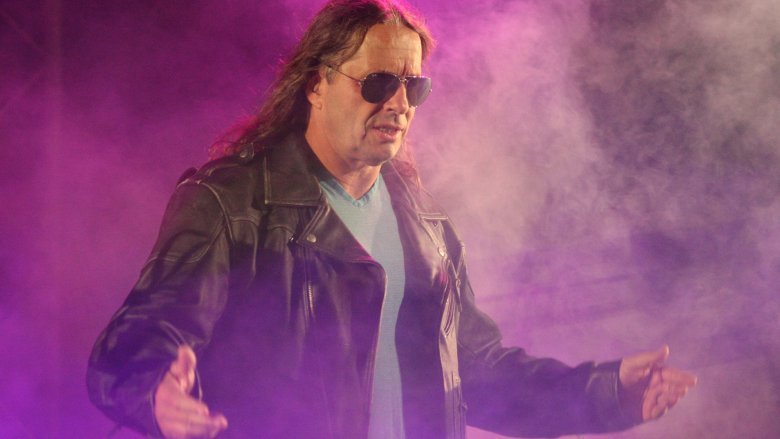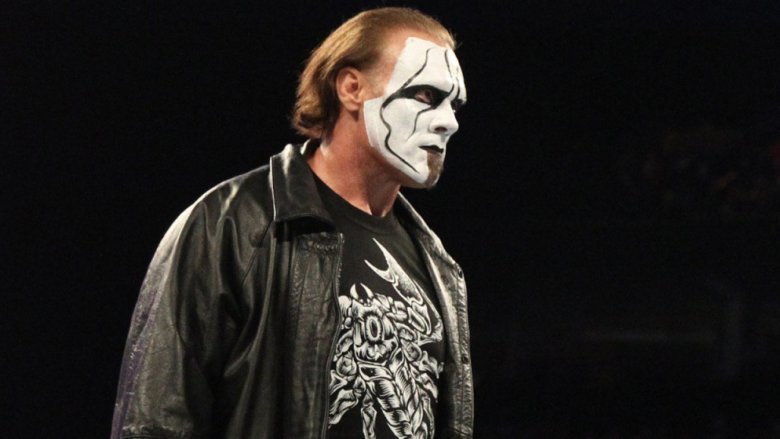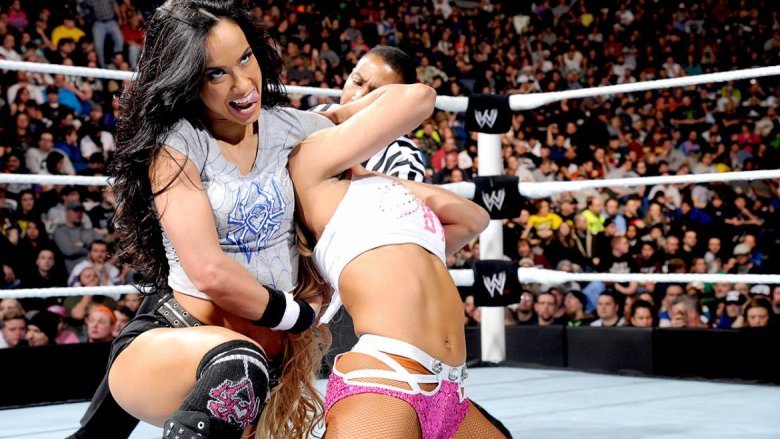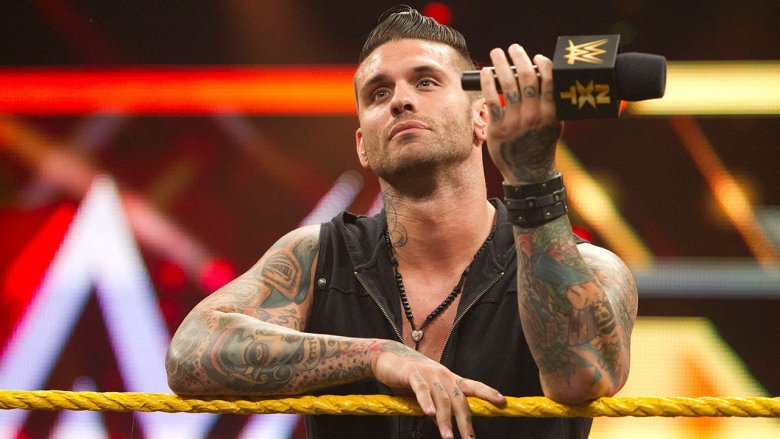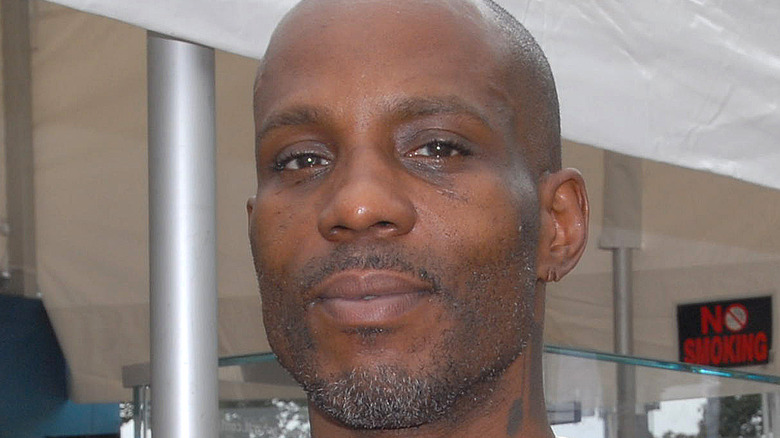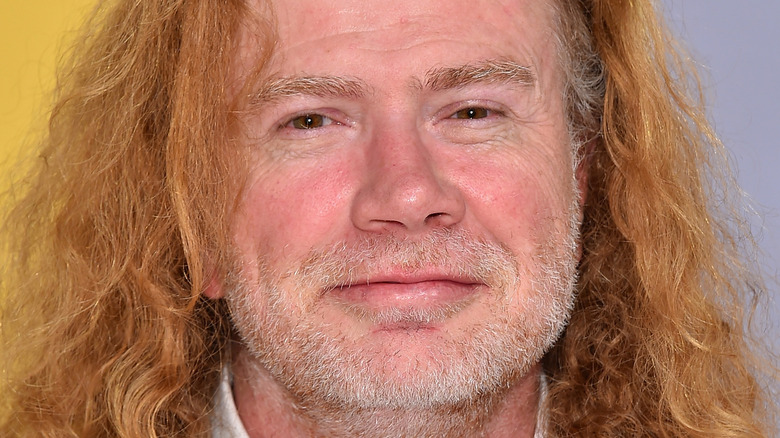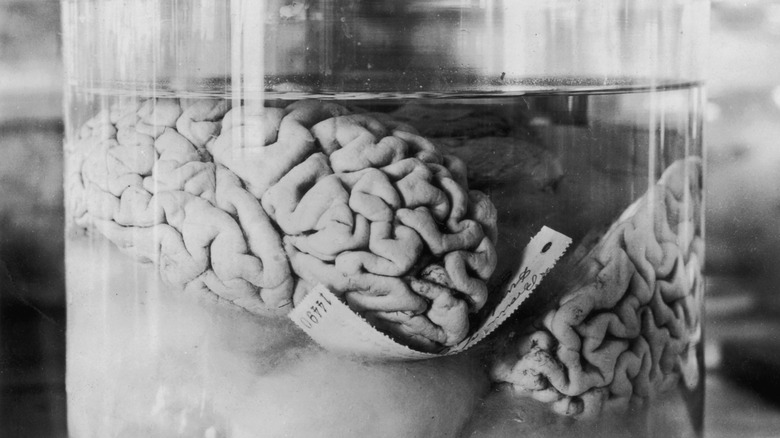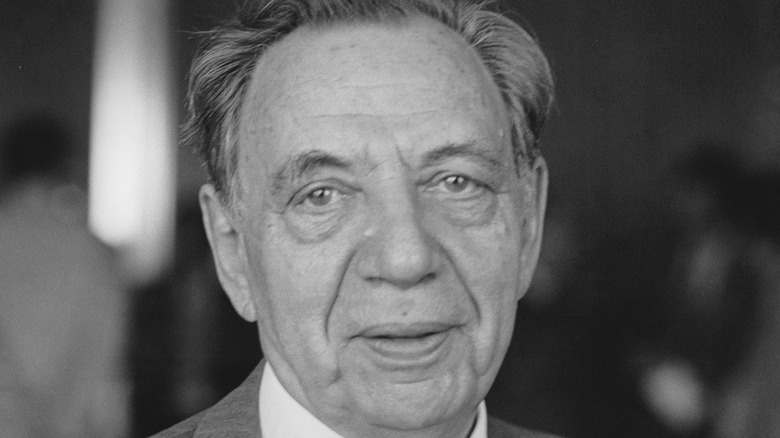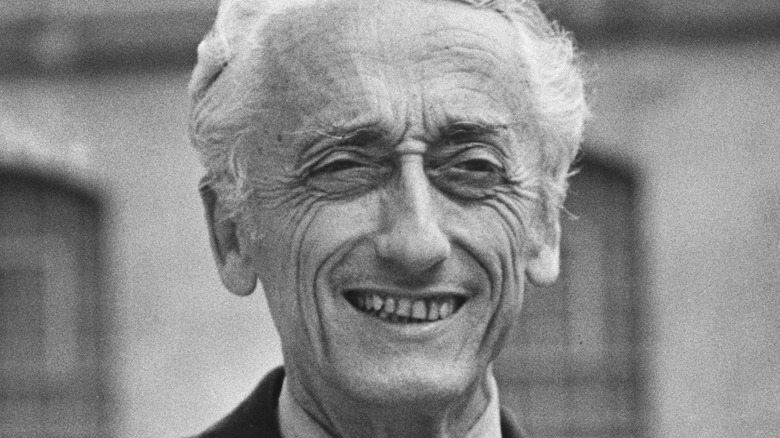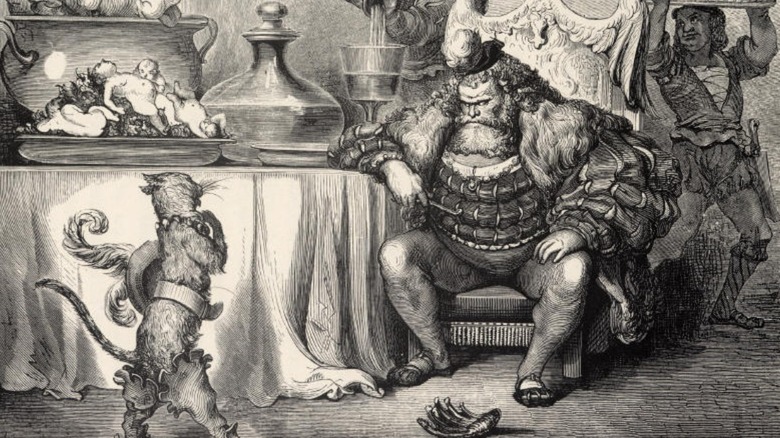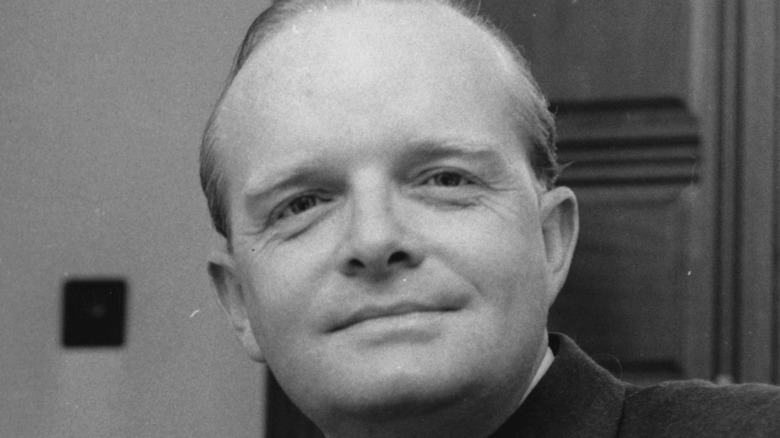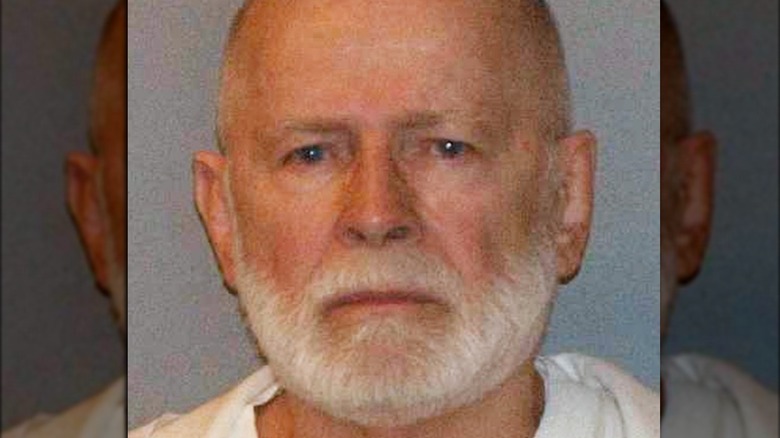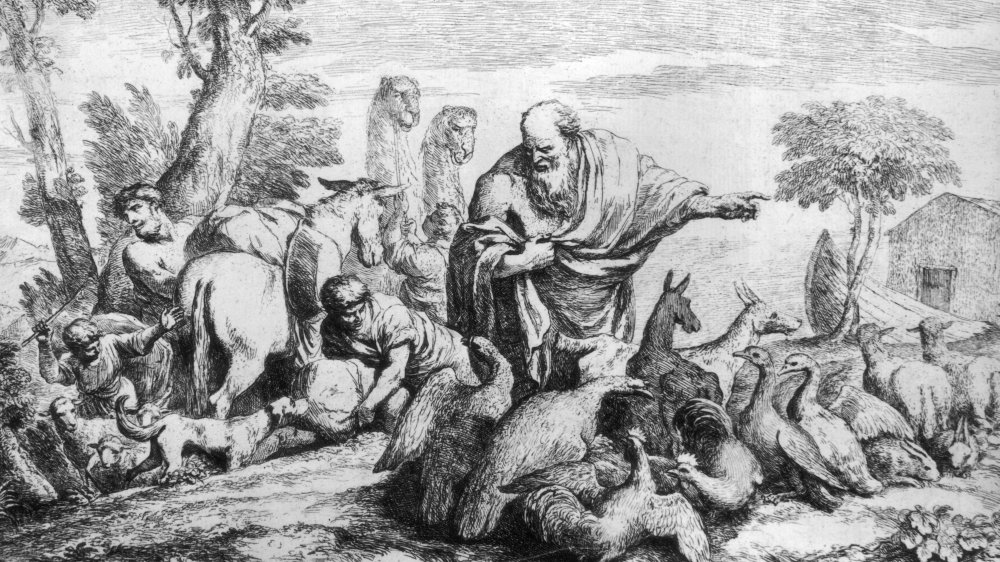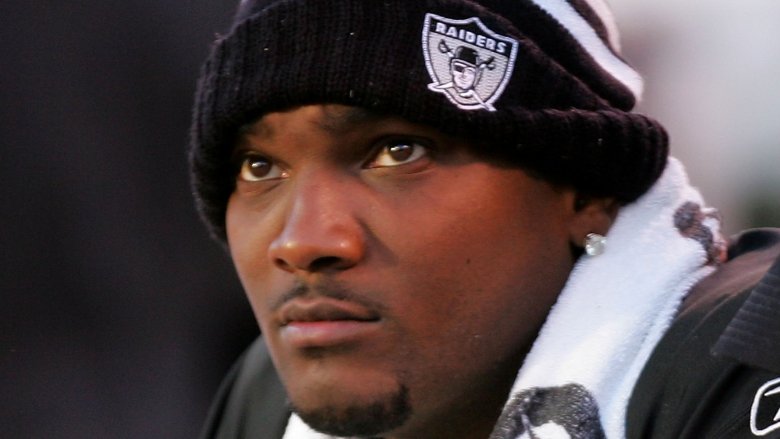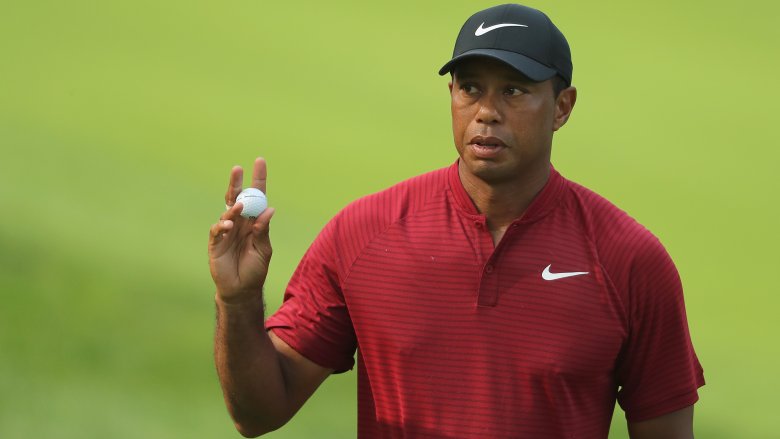
The Real Reasons These Famous Wrestlers Retired
Too often the “retirement package” for a professional wrestler comes with spinal stenosis, a broken neck, a prescription pain pill addiction or, somehow, something worse. It’s a physically brutal sport, and athletes have been hiding their real pain in favor of the spectacle since the 19th century. In more recent years, WWE has been moved to address the dangers of its sport—the concussions, the seizures, the spasms. But sooner or later, every wrestler gets hurt, and it’s not part of the act. For athletes like the following, enough was enough.
Ric Flair
If you know anything about pro wrestling, you know Ric Flair. Sixteen-time world champion, leader of the Four Horsemen, with more than forty years’ experience in rings all around the world, from New York to North Korea (not a joke, he’s worked North Korea). He’s survived just about all of his peers and even a few generations of wrestlers that followed him, even as he kept on competing well into his fifties and sixties, taking on brutal matches like his tables, ladders, and chairs bout with Edge in 2006.
So what finally got the Nature Boy to hang up his robe for good? Well, that would be Jerry Lawler’s heart attack, which happened live on RAW in September of 2012. Coincidentally, Flair would tear his left tricep working a TNA taping against Sting two nights later, which would wind up being his final match. Three months later, he gave an exclusive interview to WrestleNewz.com saying that he was done competing in the ring, and that the Lawler incident had “kind of put a decision on my future in the ring.”
Considering that Ric Flair could work himself into a hellacious frenzy just cutting promos, it makes perfect sense. It’s also a wonder he never had one himself (aside from the one he faked in WCW, because that’s just the kind of story WCW would tell), though he was probably dancing on the edge a few times.
Daniel Bryan
Until very recently, Daniel Bryan was among the most decorated active wrestlers in the WWE. By 35, he had already logged 17 years on the mat—half of his life. But during WWE’s Monday Night Raw on February 8, 2016, Bryan addressed the audience, tearfully admitting, “I’ve been wrestling since I was 18 years old. And within the first five months of my wrestling career, I’d already had three concussions. And for years after that, I would get a concussion here and there, or here or there.” That’s several “here and there’s” too many for one brain.
In recent years, questions have been raised by the media and medical community about the impact of professional contact sports on an athlete’s brain. In an interview with ESPN, Bryan discusses the damage his brain has incurred over his career: “We’ve been able to document ten concussions.” That’s a lot, but it may only be a fraction of the true number, since most concussions go undocumented.
Bryan’s wife, wrestler Brie Bella, discussed her husband’s struggles on her reality television show, Total Bellas, saying, “What a lot of people don’t know about [Bryan] is he’s been battling depression since he was 25. And really our whole relationship I’ve been used to his depression, but definitely in the last two years I know, OK it comes, it hits hard, but it only lasts for two days.” It appears that Bryan is leaving the ring at just the right time, before—as we’ll see with some of the other retirees in this article—it’s too late.
Edge
During his WWE career, Edge earned a staggering 31 championships, an impressive number even for an athlete scripted to win them all. But it was the resulting damage from an opponent’s power bomb that prompted the Hall of Famer to get an MRI. During an interview on Chris Jericho’s podcast, Talk is Jericho, Edge discussed the moment he realized he had spinal stenosis, which would force the champ into retirement at just 37. “I probably had stenosis when Jeff (Hardy) landed on me through that ladder at WrestleMania 23,” he said. “I was already having more neck issues then. How did I breeze by that?”
Whether or not the pressure comes from the front office or from a little voice within, playing-through-the-pain is a standard in professional wrestling. As a result, many athletes ignore nagging pains for too long, for fear of disrespecting the culture or losing a contract. “I was taking the Batista Bomb every night during our angle [storyline]. I would take it and my arms would go out. They would come back but it would take like 20 seconds. That should have set off alarms,” Edge continued during the podcast. “Finally, my arm was trembling. It felt like my nervous system was off. It was just an MRI that showed it. Finally WWE said ‘that’s it, dude.'”
Stone Cold Steve Austin
This wrestler’s rallying cry of “Cuz Stone Cold Said So!” became a national refrain for wrestling fans during his time in the ring. But the clock began ticking for Stone Cold Steve Austin‘s career on August 3, 1997, when he faced Owen Hart for the Intercontinental Championship. Austin had readied himself for a tombstone piledriver, but Hart switched to a “Hart Driver” at the last second, which sent Austin’s skull crashing into the mat. The blown move left Austin with a bruised spinal column and temporary paralysis.
In an interview with prowrestlingstories.com, Hart says of the moment, “I dropped him on his head. The match went from utopia to hell in a second. I knew right then; there’s something wrong…” For Austin, the realization was immediate: “As soon as my head hit that mat, I was thinking Christopher Reeve. Cause I thought I was never gonna walk again, ever. I couldn’t feel anything from my neck down.” And even though Austin returned to the ring after the incident, Summerslam ’97 marked the beginning of the end. He would go on to reinjure his neck and incur several concussions. In 2003, at the age of 38, Austin decided to hang it up, lest he risk permanent damage.
CM Punk
Over his near fifteen years in wrestling, CM Punk went from an indie darling to one of the most beloved and longest reigning champions in WWE history. But after being eliminated from the 2014 Royal Rumble, Punk completely vanished and was never seen again, despite audiences clamoring for him to return. As they soon found out, he was never coming back, and not in the typical wrestler way. No, never ever, gone forever.
The situation that led to Punk’s departure from WWE is something blockbuster movies are made of, and probably the ugliest burning of bridges between WWE and a wrestler since the Montreal Screwjob. Almost a year later, on his friend Colt Cabana’s Art of Wrestling podcast, Punk finally explained his departure, dropping a salvo of bombs that would impress a B-2 crew. He claimed that he bailed on the company because of many health issues, most of which he claims the company blatantly ignored, so he sought treatment himself. The most damning allegation Punk made was a growth on his back, which he claims was diagnosed by WWE’s doctor as a mere fatty deposit. When Punk got a second opinion at his wife’s insistence, it turned out to be a near-fatal staph infection.
WWE officially fired Punk months after he left, but the firing package came on Punk’s wedding day. That was, to Punk, the ultimate added insult, and it apparently officially killed any thought he might have had of returning some day. Punk’s since moved on to a career in MMA, but the fans sure as Hell won’t let him be forgotten. Any time anything happens that displeases WWE’s audience, you can expect to hear chants of “CM PUNK!! CM PUNK!! CM PUNK!!” while whoever’s in the ring usually has to pretend they’re suddenly deaf.
Shawn Michaels
Shawn Michaels’ name will be constantly synonymous with WrestleMania. It wouldn’t matter if he was facing a man-sized LEGO figure — Michaels would steal the show and both he and Lego Man would come out smelling like roses. Despite a back injury that kept him out of action from 1998-2002, Michaels was able to return, and worked until 2010 with no more career-threatening health problems. In fact, his retirement wasn’t physically or medically motivated at all.
Talking to ESPN, the Heartbreak Kid laid out his one reason for putting the cap on his legendary career: family. Just before WrestleMania 25, Michaels had a conversation with another WWE employee about his son — when Michaels brought up that his son was nine, the employee made an Earth-shattering remark: “Wow, halfway gone.” As Michaels went on to explain: “[The employee] said [Michaels’ son] was halfway to 18 and when he’s 18 he’s gone. That blew me away … He’s halfway gone and I’m not going to miss that.”
Michaels’ other issue was his match with the Undertaker that closed the curtain for him at Wrestlemania 26. The fight was highly acclaimed by fans and critics, and Michaels claims that there was, and still is, no higher note to go out on than that, and to even try would be sacrilegious. Rumors and hopes that Mr. Wrestlemania will change his mind still abound, however (because most wrestlers don’t really retire until the Grim Reaper tells them to) and a brief reappearance of HBK at WrestleMania 32, in his ring gear, had the wrestling world buzzing.
Jesse Ventura
Before Jesse Ventura became Governor of Minnesota, hosted his own television show called Conspiracy Theory, or had his article about September 11 pulled from theHuffington Post, he was Jesse The Body. After a decade of success and adulation in professional wrestling, The Body called it quits in 1984, after doctors discovered blood clots in his lungs.
Ventura had worked as a member of the Underwater Demolition Team in the United States Navy during the Vietnam War. He believes the blood clots in his lungs were a byproduct of his exposure to Agent Orange during the conflict. Whether or not that’s true (and it makes a lot more sense than some of the other conspiracies he subscribes to), the damage to his lungs closed a historic chapter in Ventura’s life, though he’s clearly enjoyed one of the most high-profile and varied post-wrestling careers in the sport’s history.
Kamala
Billed as the “Ugandan Giant,” James Harris — who went by the stage name Kamala — wrestled for 30 years. He rose to fame during the ’80s and ’90s, an era when cartoonish, and oftentimes insensitive, depictions of far-flung cultures struck fear into audiences. Kamala, in fact, spent time working as a truck driver in his home state of Mississippi, so he was hardly the savage, primitive cannibal he portrayed on TV.
Kamala retired in 2011 when, in November of that year, he was rushed to the hospital. A longtime sufferer of diabetes and high blood pressure, Kamala was in a bad state. He refused dialysis treatment, which resulted in the amputation of his left leg below the knee. A year later, his right leg was also amputated below the knee. Today, he is an outspoken critic of professional wrestling, especially its low pay and poor treatment of athletes, particularly minorities like himself.
Bam Bam Bigelow
Bigelow’s life is, to put it mildly, wrestling folklore. Despite a troubled second act, which included reports of non-payment on child support and serious drug abuse (which eventually led to his death at 45), Bam Bam Bigelow was one of the biggest acts — both literally and figuratively — ever to wrestle.
His enduring legend is peppered with wonderful highs and shockingly terrible lows. Six years before his last match, Bigelow suffered second-degree burns on 33 percent of his body after saving three children from a burning building. Then, only one year before he retired, Bam Bam crashed his motorcycle and nearly killed his girlfriend who was sitting on the back. Initially, Bigelow was fingered for a homicide investigation if his critically injured girlfriend did not recover, though thankfully, she did.
Bigelow’s retirement was not tied to one painful incident, but rather was brought on by the accumulation of troubles that plagued his final years. Retirement did nothing alleviate those troubles, and he was found dead in 2007.
The Dynamite Kid
The British Bulldogs of the 1980s were old-school, meaning they wrestled in an age of medical ignorance. In this grainy video of a 1986 match held in some low-rent gymnasium, one half of the Bulldogs, Dynamite Kid, is seen breaking his back while jumping over his opponent. The other wrestlers don’t even notice the injury. This incident, as well as subsequent injuries, led Kid to start abusing prescription painkillers (on top of the steroids he was already taking). Despite being regarded as one of the best tag-team duos in history, Dynamite Kid retired at 38, ten years after his broken back incident, looking painfully thin in his last performance.
His partner and cousin, Davey Boy Smith, died in 2002 of a heart attack. According to Wrestlerdeaths.com, Smith had also been abusing anabolic steroids and prescription painkillers during his career, but after a 2000 stint in rehab, he reportedly had stopped using. His death shocked and saddened the entire wrestling world.
Magnum T.A.
Terry Allen took on the moniker Magnum T.A. because of his passing resemblance to Tom Selleck’s Magnum, P.I.. Allen referred to himself as an “American Heartthrob,” and stood out from the pack as a burly-yet-handsome grappler, ready to punish all takers with a belly-to-belly suplex.
Unfortunately, in 1986, at the peak of his fame and popularity, 27-year-old Magnum T.A. lost control of his Porsche on a rain-soaked road in Charlotte, North Carolina, near his home. He was waiting in the car for hours before help arrived, and the accident left half of his body paralyzed for months. The crash permanently halted Allen’s in-ring career. Apart from a few brief, almost symbolic, appearances in the 2000s, the “American Heartthrob” was committed to the sidelines, but lucky to be alive.
Buff Bagwell
During his time in the ring, Marcus “Buff” Bagwell became a four-time World Tag Team Champion. In 2001, he was let go from the WWF amid rumors that he had faked an injury and convinced his mother to basically call him out sick, though Bagwell denies this to this day.
After a car crash nearly killed him in 2012, Bagwell finally began thinking of a different career. He continued to wrestle here and there for a few years on the independent circuit but, sensing the end was near, he picked up a new hobby: prostitution. Bagwell is now a somewhat high-dollar gigolo, charging $25,000 for a week of pleasure. He appeared on the hit Showtime docu-series Gigolos in 2014, saying on-screen, “This is the first time I’ve seen a chance to segue from wrestling and I’m all over it. I want to do it.” In the next scene, another gigolo is heard saying, “We’re gonna find out if Buff has got the stuff.” He’s still gigolo’ing, so apparently he does.
Paul “Mr. Wonderful” Orndorff
Paul Orndorff may not be a humongous superstar, but it’s hard to imagine where wrestling would be without him. He wasn’t just part of the first WrestleMania: he was in the freaking main event, teaming with “Rowdy” Roddy Piper (who gave him the nickname “Mr. Wonderful”) against Hulk Hogan and Mr. T. He had a WWF title shot after about a month with the company, and was one of the top heels from the jump.
Sadly, that same high bar of success was what ultimately took Mr. Wonderful out of the game. The end was set into motion when Orndorff injured the nerves in his arm. Most people would have immediately gone straight to the hospital to get treated, but Orndorff refused. Why? Because at the time of the injury, he was in the middle of his second battle with former partner Hulk Hogan, which many fans look at as one of the greatest feuds of all time, from both a creative and a financial standpoint. Mr. Wonderful wasn’t about to bail on that kind of cash and glory, so he pushed on. But it cost him, as he had to step away from the ring for two years.
Orndorff worked tirelessly to rehab his arm, and managed to not only get it back to its full strength, but made it even stronger. It didn’t look that way on the surface, however, as his injured arm was obviously smaller. But he was able to keep his career going over in WCW until 1995, when his arm literally began to wither away. At this point, he finally retired from competition to train the next generation.
On the bright side, now that he’s been able to stop worrying about his arm, he’s found time to grow a sweet, sweet mustache.
Nigel McGuinness
To fans who have only seen WWE, Nigel McGuinness probably isn’t a familiar name. But to fans of Ring of Honor, McGuinness is a cornerstone, having had top-tier matches over six years with the very best in that promotion, including future WWE stars Seth Rollins, Sami Zayn, Kevin Owens, Cesaro, and his greatest rival, Daniel Bryan. In fact, he would have joined them there as well when he tried out in 2009, but a failed physical kept him away.
Instead, he signed with TNA, under the name Desmond Wolfe, where he spent two years largely under the radar, a great feud with Kurt Angle and a brief flirtation with Ric Flair’s Fourtune faction (yep, they spelled it that way) alongside AJ Styles notwithstanding. Unfortunately, in 2010, he tested positive for Hepatitis B, and the cause was apparently exposure to blood, which is pretty par for the course when you’re a professional wrestler. He received the necessary medication and got cured within half a year of getting treatment, but TNA released him anyway. Deciding he had nowhere left to go as a wrestler, he performed a two-month “Nigel McGuinness retirement tour,” that culminated in his last match in December 2011.
Post-retirement, Nigel has settled into his new day job as the storyline matchmaker for ROH, after a thankfully brief stint working a deli counter. But he has also used his position and story to call for increased hepatitis vaccinations and an end to purposeful bleeding (i.e. blading and certain hardcore matches), which he has successfully gotten made into ROH policy.
Hulk Hogan
Hogan is certainly the sport’s biggest star of all time. He was not only a reckoning force on the mat, but also a genius self-marketer—one of wrestling’s first athletes to really control the whole show, from storyline to action figures. Ironically, his fall from greatness was not due to some in-ring accident (though the Hulkster definitely has a ton of battle bruising). It wasn’t a broken back or pinched neck that did him in, but rather his mouth.
Hogan had flirted with the idea of retiring from wrestling dozens of times over his career, but it was his leaked sex tape — in which Hogan is heard using racial slurs while talking about the prospect of his daughter dating a black man — that truly ended his career. WWE immediately fired him, kicked him out of their Hall of Fame and, for the most part, acted like one of the biggest stars in their history never existed. It’s possible that, once the dust settles, Hogan could return to the ring, but for now he’s enjoying the fruits of his $140 million lawsuit victory against the website Gawker (which the two sides eventually settled for $31 million) for leaking the sex tape.
Bret Hart
Bret “Hitman” Hart was one of the best pure technical wrestlers ever. There’s a reason he could call himself “the best there is, the best there was, and the best there ever will be” without anyone giving him hell for hyperbole. But his active wrestling career ended both earlier than it should’ve and with far less fanfare than such a legend deserved.
In December 1999, Hart was wrestling Goldberg for the WCW World Championship at Starrcade. Near the match’s end, Goldberg threw Hart to the ropes and mule-kicked him in the head. Unfortunately, Goldberg apparently forgot that wrestling moves aren’t supposed to actually hurt, and he wound up kicking Bret as hard as he could. The resulting severe concussion put Hart on the shelf for months, and in late 2000, WCW fired him. Shortly thereafter, Hart officially called it quits on his wrestling career, saying on his website, “Due to the severity of numerous concussions I received in late December 1999 and early January 2000 … my doctors have advised me that any physical return to the ring would hold serious consequences for me.” Aside from a symbolic return in 2010, where Hart won the WWE United States championship despite being retired for years (and suffering a severe stroke in 2002), he’s stayed on the sidelines ever since.
Sting
Sting had been wrestling for 30 years but had never competed in a WWE ring until 2015. It’s a good thing he checked that promotion off his bucket list because by the end of that year, a freak injury sent him into a somewhat-unexpected retirement.
At Night of Champions in September 2015, Sting faced Seth Rollins for the WWE Championship. Late in the match, Sting was perched on the top rope and Rollins grabbed him for a “Buckle Bomb” — a powerbomb into the turnbuckle. Something bad happened, however, and Sting suffered a severe back injury as a result. It was so bad that he was unable to run the ropes after, collapsing in a pained heap at Rollins’ feet.
As it turned out, it wasn’t just a routine back injury — according to TMZ, the Stinger was suffering from cervical spinal stenosis, the same spinal injury that forced Edge to retire young just four years prior. With that diagnosis, Sting apparently realized there was no real hope of returning to the ring for one last hurrah, and he announced his retirement the following April, right after being inducted into the Hall of Fame. Now he’s got plenty of time to chill with his bass-playing namesake after concerts, when he’s not busy pumping up the Dallas Cowboys with the art of scary face paint.
AJ Lee
Since debuting for WWE in 2009, AJ Lee rode her “crazy nerdy girl” gimmick to great success and popularity. And yet, by 2015, Lee was gone from wrestling, seemingly for good. She seemed perfectly healthy and at the top of her game, so what gives?
As it turns out, it was a combination of factors. For one thing, Lee wasn’t quite as healthy as she seemed. According to her autobiography Crazy Is My Superpower, Lee suffered at least seven concussions in her short career, plus she — like Sting and Edge before her — had damaged her cervical spine beyond 100 percent repair. That spinal issue was the biggest reason she walked away from wrestling at the spring chicken-esque age of 28. When the choices are “wrestle or walk,” walking typically wins.
The other reason isn’t confirmed by Lee, but many believe it to be true. Lee’s husband is CM Punk, whose own reasons for splitting from WWE we’ve already documented. As a result, according to IB Times, Lee often felt stuck between two sides: her company, and her husband. Ultimately, she chose her husband by leaving, but whether or not that was why she retired from wrestling altogether, rather than work elsewhere, is up in the air. All we know for sure is that her spine said “nope” and she agreed.
Corey Graves
If you only watch main-roster WWE, you’ve exclusively seen Corey Graves as a color commentator. But he looks just like a wrestler, what with the tattoos and decent build and all. That’s because he used to be one, before concussions made him switch directions in his career long before he planned to.
After wrestling on the independent circuit for more than a decade as Sterling James Keenan, Graves signed an NXT (WWE developmental) contract in 2011. There was no reason to think he wouldn’t eventually make the main WWE roster. By December 2014, however, a series of concussions sustained over his career forced doctors to recommend he stop wrestling. Realizing that the health of his brain was more important than wrestling matches, Graves agreed and retired at age 30. That said, in the very same segment that he announced his retirement, he also announced his new career: NXT commentator. He proved so good at being a snarky, heelish color analyst (with lines like “I’d rather be laying on the tracks” when told to board a face wrestler’s Hype Train), that by mid-2016, Graves had become a full-time commentator on WWE Raw. He’s not wrestling, but Graves clearly has a ton of fuel left in his career.
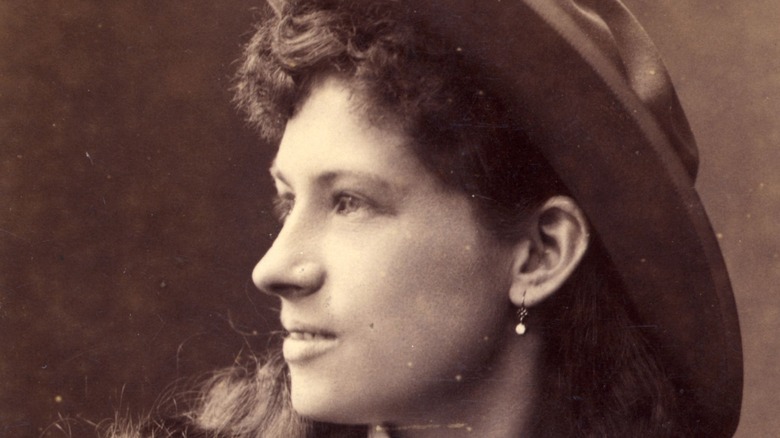
The Truth About The Time Annie Oakley Competed At Wimbledon
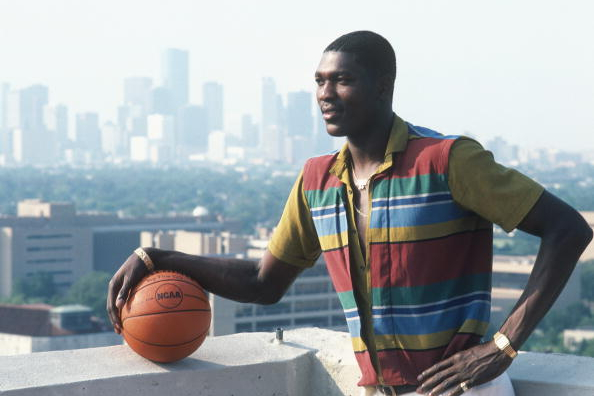
Retired NBA Stars That Work 9-5
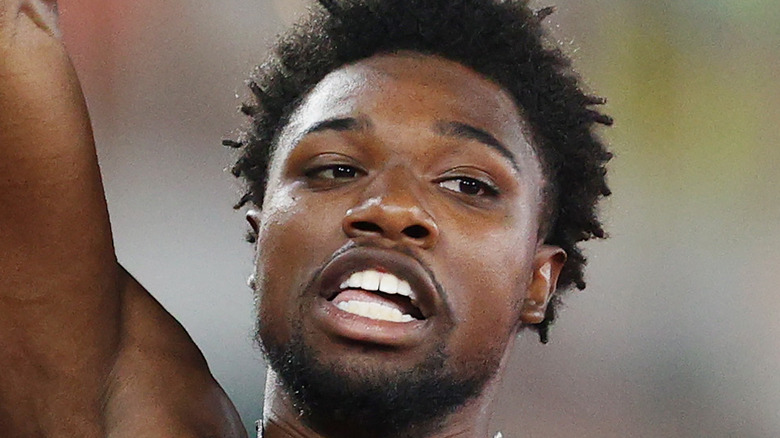
The Untold Truth Of Noah Lyles

All The Times Countries Have Been Banned From The Olympics
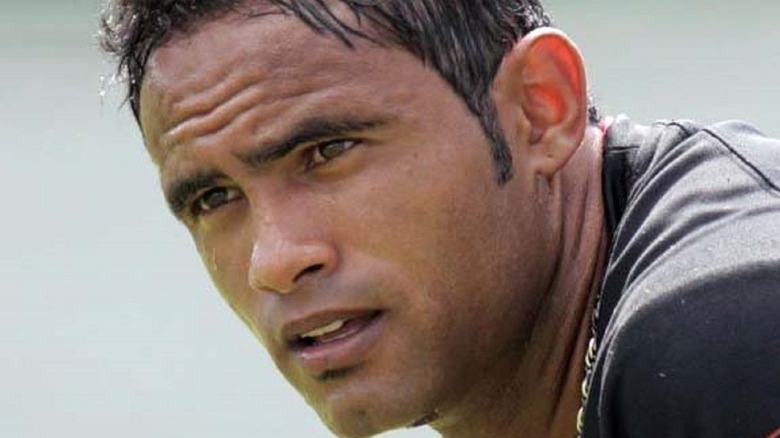
Why Soccer Star Bruno Fernandes De Souza Killed His Mistress
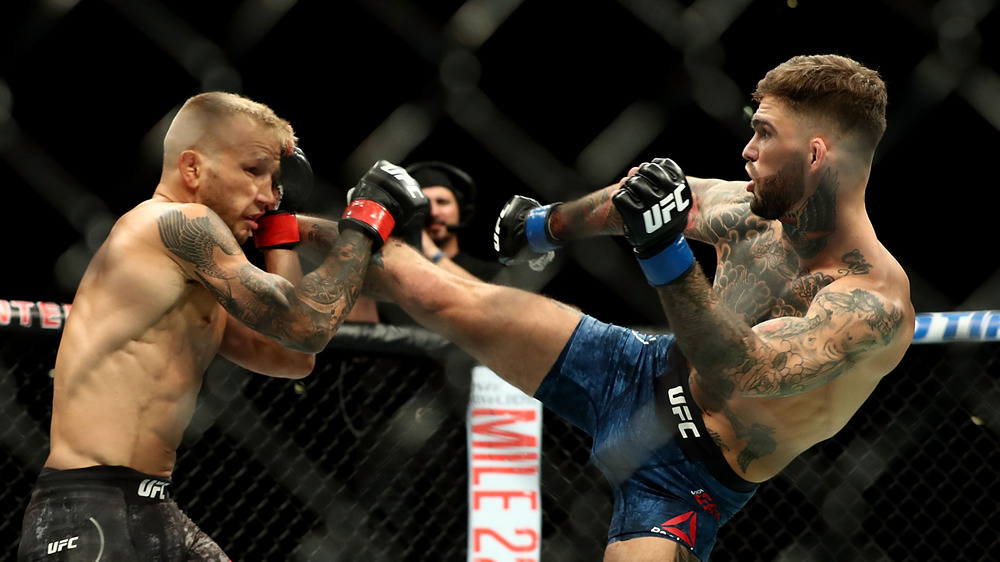
Inside Cody Garbrandt And T.J. Dillashaw's Feud
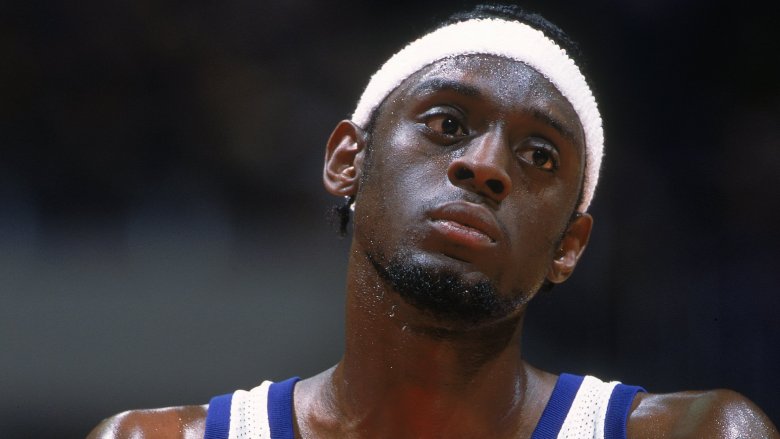
Basketball Stars Who Are Surprisingly Poor
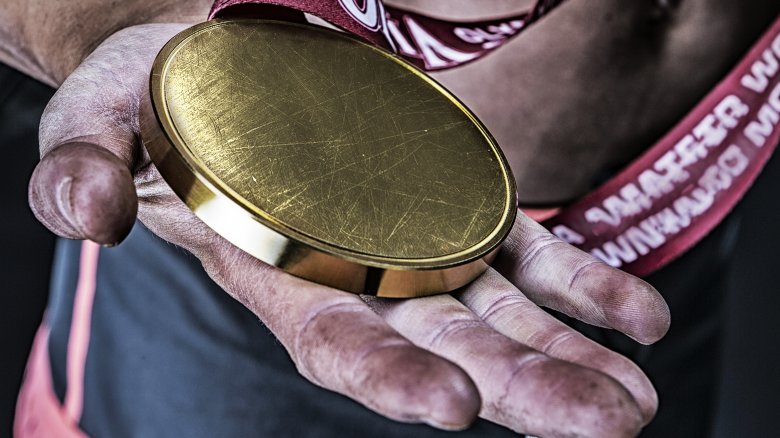
The Olympics Are Pretty Messed Up
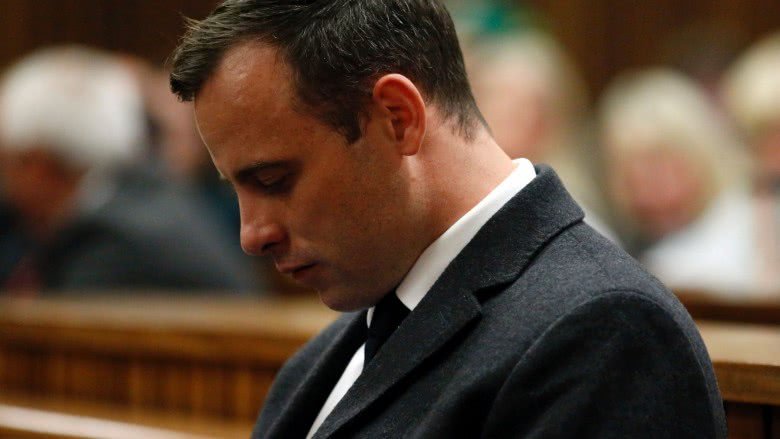
Incredible Athletes You Forgot Are Currently In Jail

The Truth Behind These Classic Sports Bloopers
